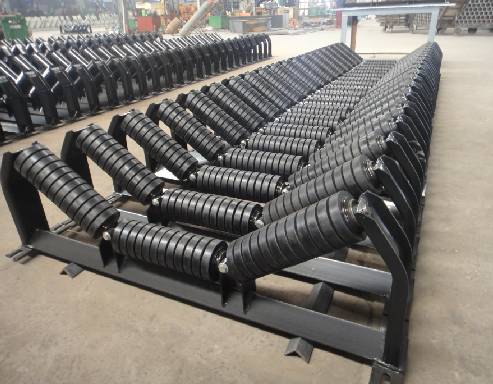 Afrikaans
Afrikaans  Albanian
Albanian  Amharic
Amharic  Arabic
Arabic  Armenian
Armenian  Azerbaijani
Azerbaijani  Basque
Basque  Belarusian
Belarusian  Bengali
Bengali  Bosnian
Bosnian  Bulgarian
Bulgarian  Catalan
Catalan  Cebuano
Cebuano  Corsican
Corsican  Croatian
Croatian  Czech
Czech  Danish
Danish  Dutch
Dutch  English
English  Esperanto
Esperanto  Estonian
Estonian  Finnish
Finnish  French
French  Frisian
Frisian  Galician
Galician  Georgian
Georgian  German
German  Greek
Greek  Gujarati
Gujarati  Haitian Creole
Haitian Creole  hausa
hausa  hawaiian
hawaiian  Hebrew
Hebrew  Hindi
Hindi  Miao
Miao  Hungarian
Hungarian  Icelandic
Icelandic  igbo
igbo  Indonesian
Indonesian  irish
irish  Italian
Italian  Japanese
Japanese  Javanese
Javanese  Kannada
Kannada  kazakh
kazakh  Khmer
Khmer  Rwandese
Rwandese  Korean
Korean  Kurdish
Kurdish  Kyrgyz
Kyrgyz  Lao
Lao  Latin
Latin  Latvian
Latvian  Lithuanian
Lithuanian  Luxembourgish
Luxembourgish  Macedonian
Macedonian  Malgashi
Malgashi  Malay
Malay  Malayalam
Malayalam  Maltese
Maltese  Maori
Maori  Marathi
Marathi  Mongolian
Mongolian  Myanmar
Myanmar  Nepali
Nepali  Norwegian
Norwegian  Norwegian
Norwegian  Occitan
Occitan  Pashto
Pashto  Persian
Persian  Polish
Polish  Portuguese
Portuguese  Punjabi
Punjabi  Romanian
Romanian  Russian
Russian  Samoan
Samoan  Scottish Gaelic
Scottish Gaelic  Serbian
Serbian  Sesotho
Sesotho  Shona
Shona  Sindhi
Sindhi  Sinhala
Sinhala  Slovak
Slovak  Slovenian
Slovenian  Somali
Somali  Spanish
Spanish  Sundanese
Sundanese  Swahili
Swahili  Swedish
Swedish  Tagalog
Tagalog  Tajik
Tajik  Tamil
Tamil  Tatar
Tatar  Telugu
Telugu  Thai
Thai  Turkish
Turkish  Turkmen
Turkmen  Ukrainian
Ukrainian  Urdu
Urdu  Uighur
Uighur  Uzbek
Uzbek  Vietnamese
Vietnamese  Welsh
Welsh  Bantu
Bantu  Yiddish
Yiddish  Yoruba
Yoruba  Zulu
Zulu Importance of Idler Components in Conveyor Belt Systems for Efficient Operations
The Role of Idlers in Conveyor Belt Systems
Conveyor belts are essential components in various industries, facilitating the efficient movement of materials from one location to another. Whether in manufacturing, mining, or logistics, conveyor systems enhance productivity and reduce manual labor. A critical aspect of these systems is the use of idlers, which play a vital role in the functionality and longevity of conveyor belts.
What are Idlers?
Idlers are unpowered rollers that support the conveyor belt throughout its travel. They are installed at various points along the belt to maintain tension, provide tracking, and allow for the smooth movement of materials. Depending on their design, idlers can also help minimize friction, reduce wear, and enhance overall system efficiency.
Types of Idlers
There are several types of idlers used in conveyor systems, each designed for specific applications
1. Carrying Idlers These are the most common type, located along the length of the conveyor belt to support the weight of the material being conveyed. They come in various configurations, including troughing idlers, which are designed to help contain the material, and flat idlers, used for lighter applications.
2. Return Idlers These idlers are positioned on the return side of the conveyor belt, helping to guide the belt back to its original position without sagging. They are crucial for maintaining the alignment and tension of the belt as it returns after delivering its load.
3. Specialty Idlers In addition to standard carrying and return idlers, there are specialty idlers designed for specific conditions, such as impact idlers, which are used to absorb shock when heavy materials are loaded onto the belt. There are also self-aligning idlers that help correct belt misalignment and maintain optimal operation.
Importance of Idlers
The idler system has a significant impact on the overall efficiency of a conveyor belt
. Here are a few reasons why they are crucial in conveyor systemsidler for conveyor belt

1. Load Distribution Idlers distribute the weight of the material evenly across the belt, reducing stress on any one area and extending the life of both the belt and the supporting structure.
2. Friction Reduction By providing a smooth surface for the belt to travel over, idlers significantly reduce friction. Less friction translates to less wear and tear on the belt, leading to lower maintenance costs and longer operational life.
3. Belt Alignment Idlers help keep the conveyor belt aligned, preventing it from drifting and reducing the likelihood of material spillage. Proper alignment is essential for efficient operation, as misaligned belts can cause wear and even breakdowns.
4. Support and Stability In high-capacity conveyor systems, idlers provide essential support and stability, allowing the conveyor to handle heavy loads without compromising its structural integrity.
Maintenance of Idlers
Regular maintenance of idlers is critical for ensuring the reliability and efficiency of conveyor systems. Common maintenance tasks include
1. Inspection Regularly inspecting idlers for wear, damage, and misalignment can help identify potential problems before they escalate.
2. Lubrication Many idler bearings require lubrication for smooth operation. Neglecting this can lead to increased friction and premature wear.
3. Replacement It is important to replace worn or damaged idlers promptly to maintain system efficiency and prevent larger issues from developing.
Conclusion
Idlers are a fundamental component of conveyor belt systems, contributing significantly to their efficiency, longevity, and effectiveness in material handling. Understanding their types, functions, and maintenance needs is essential for anyone involved in the operation and management of conveyor systems. By prioritizing idler maintenance and ensuring that the right type is used for specific applications, businesses can enhance productivity, reduce downtime, and ensure the smooth operation of their material handling processes. As industries continue to evolve, so too will the technologies surrounding conveyor systems and their components, but the fundamental role of idlers will remain indispensable.
-
Revolutionizing Conveyor Reliability with Advanced Rubber Lagging PulleysNewsJul.22,2025
-
Powering Precision and Durability with Expert Manufacturers of Conveyor ComponentsNewsJul.22,2025
-
Optimizing Conveyor Systems with Advanced Conveyor AccessoriesNewsJul.22,2025
-
Maximize Conveyor Efficiency with Quality Conveyor Idler PulleysNewsJul.22,2025
-
Future-Proof Your Conveyor System with High-Performance Polyurethane RollerNewsJul.22,2025
-
Driving Efficiency Forward with Quality Idlers and RollersNewsJul.22,2025





























